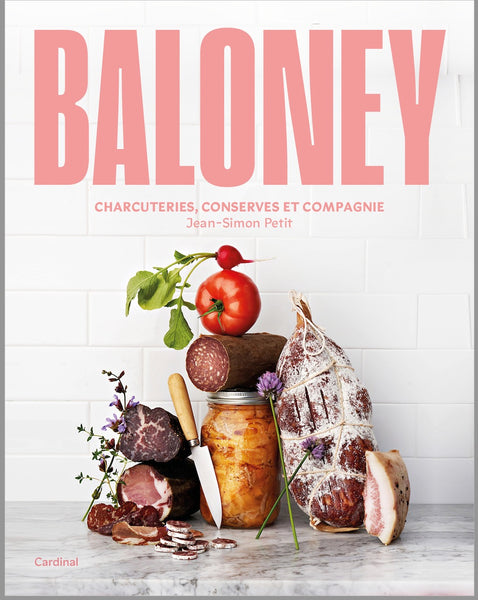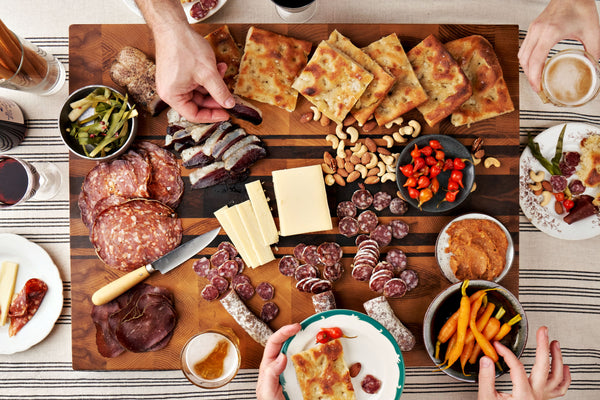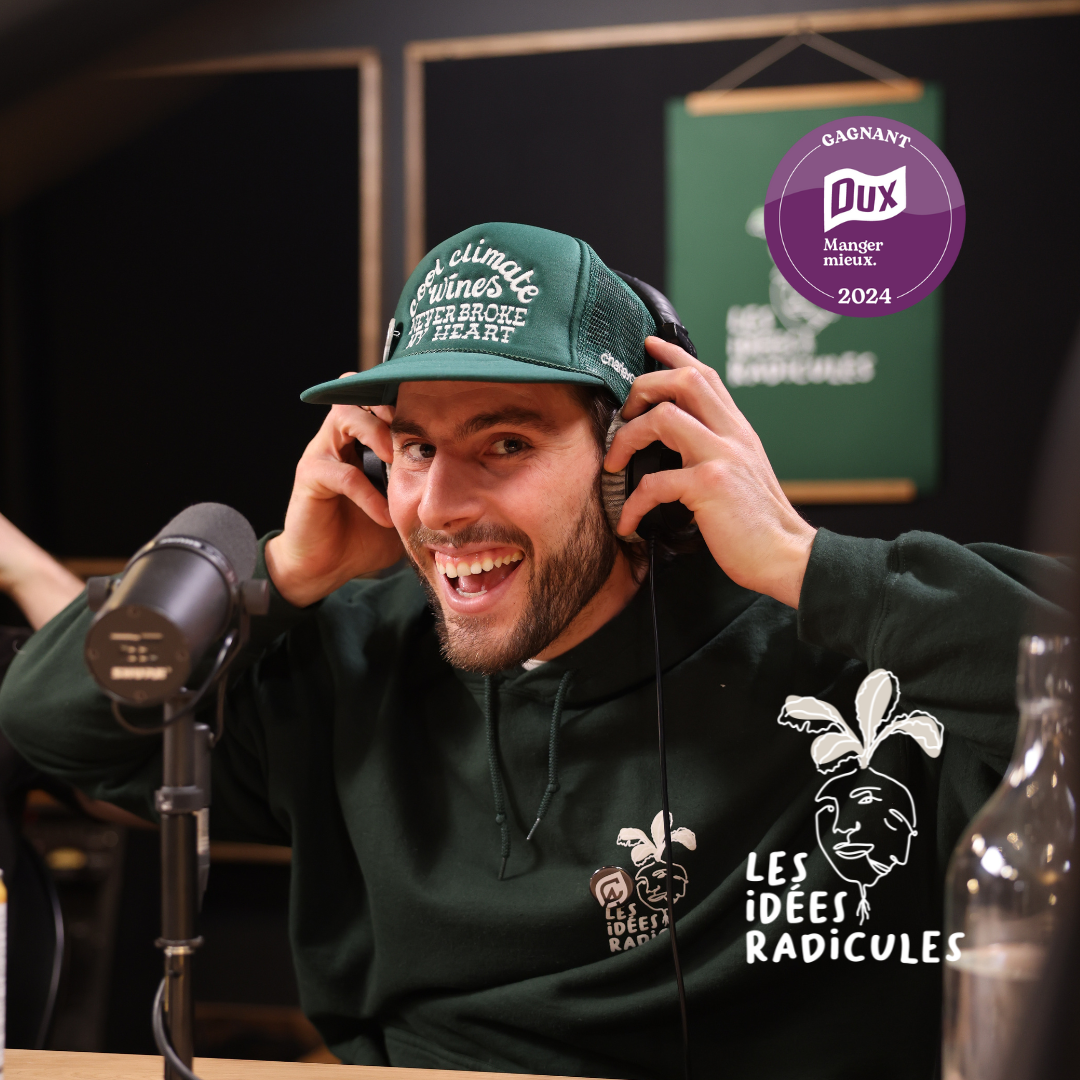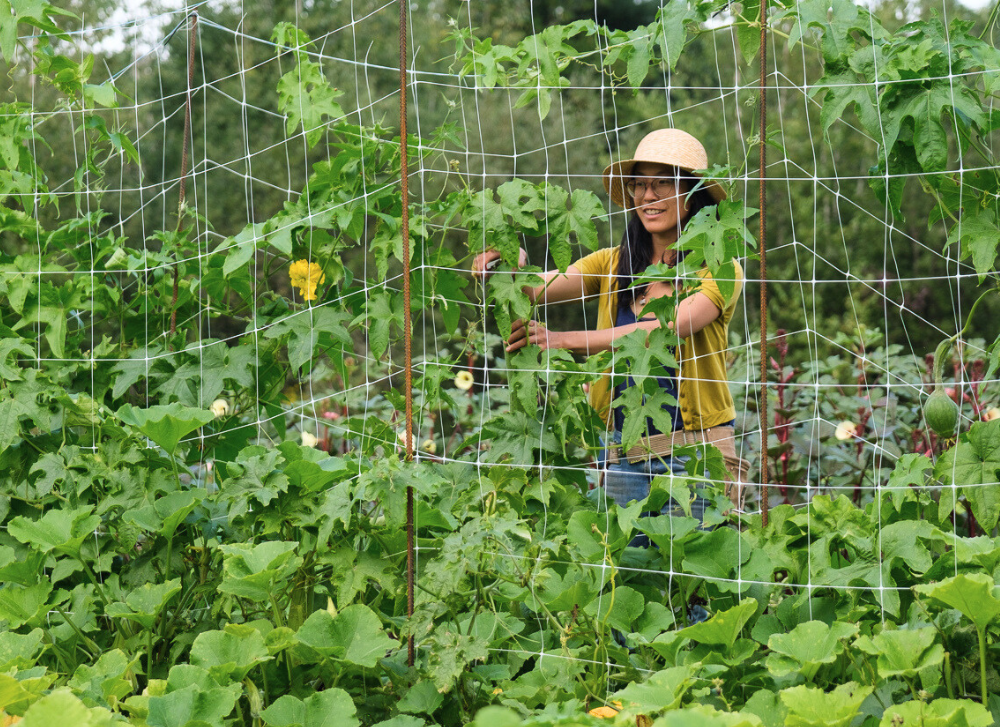From a very young butcher to becoming a winner of the Artisan of the Year Laurel , including participation in the first season of Chefs!, Jean-Simon Petit has certainly carved out its place in the world of artisanal charcuterie in Quebec.
This fine professional career now leads the head of the Four-Times Farm to the publication of his first cookbook entitled Baloney – Delicatessen, Preserves and Company.
To mark the occasion, discover the career of this master butcher in 12 questions and answers!
Jean-Simon, tell us a little about your story. Where does your passion for charcuterie come from?
I started working in the field very early. At 15, I started my butchering course. Then I worked in small butcher shops and also learned a lot from an old career butcher. After that, I did my cooking course and waltzed between the two. But it was really when I was working at the Dominion Square Tavern that I started making homemade charcuterie full-time and discovered this profession.
How did you learn all these techniques that you are now a master of? Do you consider yourself self-taught?
In terms of charcuterie, yes, I would say I'm self-taught, because there aren't many people who make it in Quebec and who can pass on their knowledge. I also learned a lot through my travels, by reading many American and European books and by participating in competitions.
What competitions have you participated in?
More recently, we participated with the Ferme des Quatre-Temps in the Rabelais World Cup in France, which is basically the World Sausage Championship. We won 4 gold medals there!
Wow, congratulations! By the way, you're now a chef at Ferme des Quatre-Temps. How has working directly with animals and agriculture impacted your work?
The relationship with the animals is super important, because at its core, charcuterie is pork and salt. The quality of the meat plays a huge role. So the fact that the pigs we raise are raised in pastures and forests really has an impact on the quality of the muscles and the marbling of the meat. And then, when it comes to herbs, we work directly with the farm's market gardeners, so we have everything we need. I think we're pretty much the only ones who can do that.

I imagine that this proximity allows you to have great creative freedom?
Yes, it pushes us to innovate and do things differently. For example, when market gardeners harvest leeks, they have to remove a good portion of the dark green leaves. Well, with my partner Olivier, we decided to take these leaves, smoke them, and dehydrate them to create a new sausage flavor. This allows us to make unique products while limiting farm losses, which is ultimately our goal.
Now that you work in agriculture and livestock farming, what are some of the challenges or issues that differ from when you worked in a butcher's shop or kitchen?
The biggest problem is very much on the side of animals and breeding. Access to slaughterhouses is getting more and more difficult, there are almost none left. They have to be sent further away, which is really not ideal.
You just wrote your first book, Baloney. What inspired you to do it?
I had a lot of friends and acquaintances who told me they wanted to learn how to make their own charcuterie and discover other little professional tips, so I decided to take the plunge and leave a little legacy to everyone. I really wanted to adapt everything so that it would be the smallest possible equipment and so that the recipes could be made on a small scale, which doesn't really exist in similar books currently.

So I take it Baloney is pretty much aimed at everyone who is interested in charcuterie?
It's for everyone, but also for professional cooks. In Quebec, we have a lot of fine cheeses and excellent artisans in this area, but we really don't have many artisans specializing in charcuterie. The majority of charcuterie we find in Quebec comes from commercial chains that do the processing themselves, or they are external products. Right now, I would say there are at most 10 artisan charcutiers in Quebec, so there's a lot of room for development. I would like to see more artisanal charcuterie from all over our region on charcuterie boards, and that's why I want to share my recipes and make them accessible.
This is a really great idea! Would you say it's easy or even feasible for the average person to make their own charcuterie at home?
Of course, there are levels of difficulty. For example, prosciutto is harder to make, so I don't recommend starting with that. I would say start with fresh sausages, then try salami, and finally move on to more complex cured meats.

Besides recipes, what can we expect to find in your book? Any anecdotes, tips, etc.?
Each recipe comes with an anecdote or a story that really follows my journey over time. I talk about chefs who have had an influence on my work and artisans I've met, for example, so there aren't just recipes to discover. Also, there are not only recipes for charcuterie, but also for preserves, fermentations, and even baking, so I share some tips on that.
After the release of Baloney, what's next for you professionally? A second book on the horizon perhaps?
I'm already working on two book ideas! While visiting other farms, I realized that one thing that really helps market gardening is the processing of their produce. I was talking to Stephanie Wang from the Le Rizen farm. Previously, she didn't do any processing, but she told me that today 60% of her sales come from her processed products. That's why I want to create a sort of encyclopedia of market gardening processing, with all the techniques to help market gardeners make their preserves and process their products.
This is great, I hope this project sees the light of day! To finish on a high note, the killer question: French charcuterie or Italian charcuterie?
I'm definitely more of an Italian charcuterie person. For me, prosciutto is better than Bayonne ham!
Thank you very much Jean-Simon, I can't wait to try your wonderful recipes!
My pleasure!
The book Baloney – Delicatessen, Preserves and Company by Jean-Simon Petit and published by Éditions Cardinal is available in bookstores from October 24, 2023.
Photo credit: Stéphan Doe






